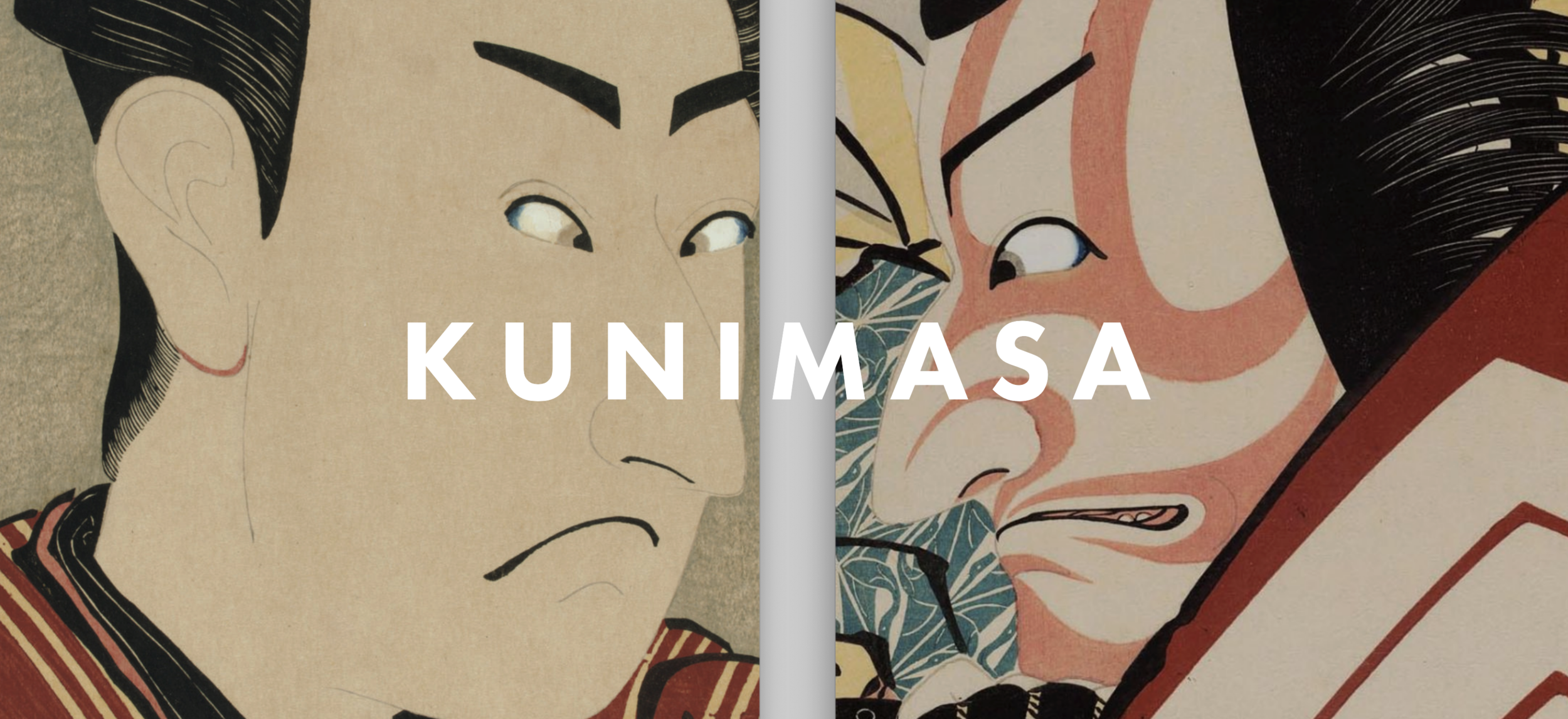COLLECTING JAPANESE PRINTS FEATURED UKIYO-E ARTISTUtagawa Kunimasa
1773 - 1810
Profile at a Glance:
Most recognized for his 3/4 length Kabuki actor portraits
His designs are prized for their dramatic and expressive qualities
Born in Aizu, Fukushima Prefecture in 1773, Utagawa Kunimasa was a woodblock artist of the late Edo period specializing in yakusha-e, or Kabuki actor prints. After working in a local dye factory for several years, Kunimasa moved to Edo to pursue a career as an artist. An ardent fan of Kabuki theatre, he sought to express the dynamism of actors onstage; Kunimasa's search for guidance thus led him to ukiyo-e master Utagawa Toyokuni I (1769-1825), who accepted him as his very first pupil. Under the tutelage of Toyokuni, Kunimasa was able to master Utagawa school painting techniques; his first works appeared on the open market in 1795.
The following year, Kunimasa designed two okubi-e actor print series for publishers Uemura Yohei and Tamariya Zenbei. Over the next fifteen years, the artist would continue on to produce one hundred and twenty-five prints of yakusha-e, bijin-ga, and landscapes. Utagawa Kunimasa passed away in 1810 at the age of thirty-seven. Due to the ephemeral nature of his life and career, Kunimasa prints are exceedingly rare and fetch high prices on the open market.



